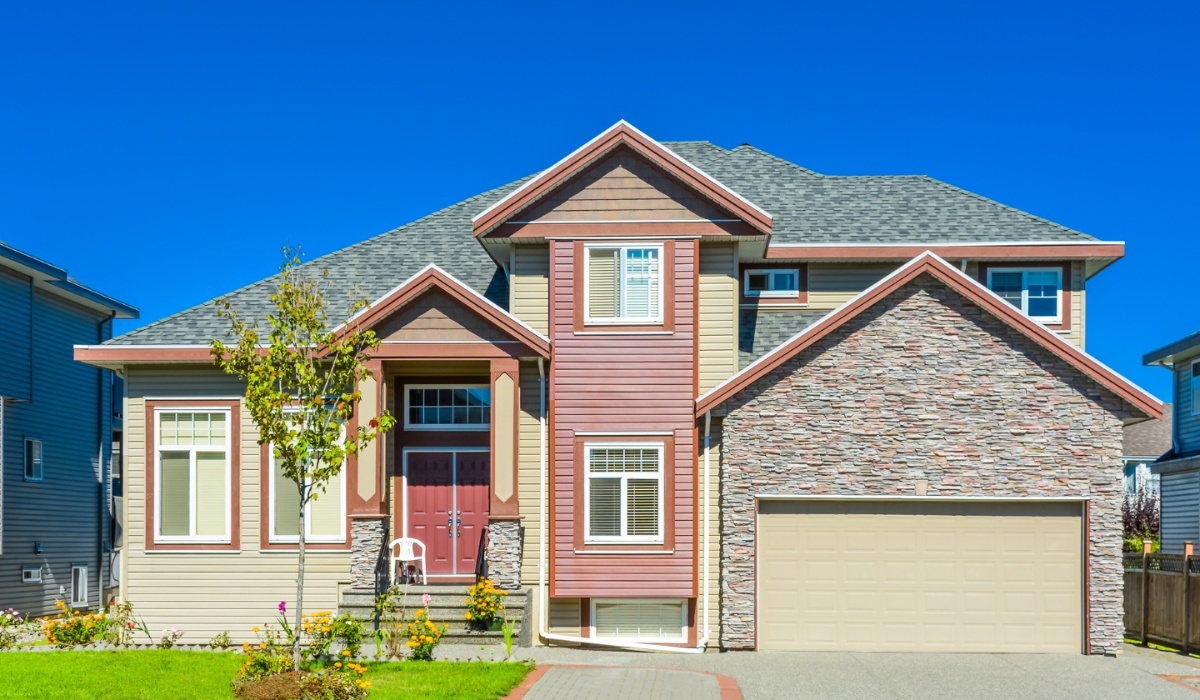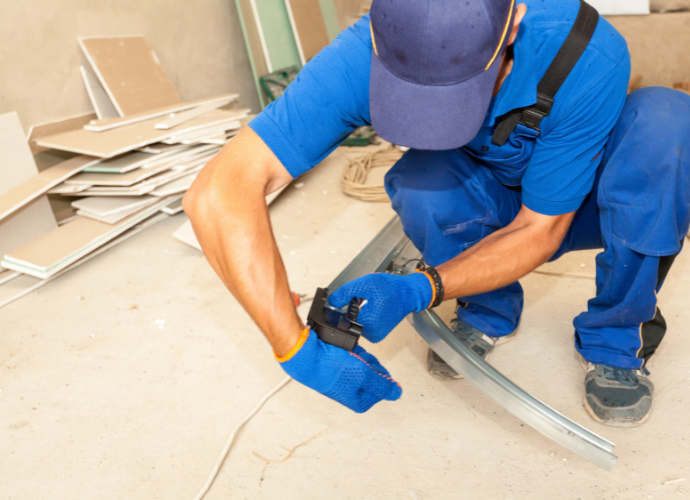Thinking about enhancing your home's curb appeal and security? A new garage door can dramatically improve both. This comprehensive guide walks you through everything you need to know about installing a garage door in your existing garage, from choosing the right style to ensuring long-term safety and maintenance. Whether you're a seasoned DIYer or prefer professional installation, this guide will empower you to make informed decisions.
What Types of Garage Doors Can I Install?
Choosing the right garage door significantly impacts both aesthetics and functionality. Several styles cater to diverse needs and budgets. Overhead sectional doors, the most common type, offer smooth, upward opening and are available in various materials and styles, including insulated options for enhanced energy efficiency and noise reduction. Roller doors, known for their compact design and space-saving capabilities, are ideal for smaller garages. Tilt-up doors, with their straightforward upward tilt, provide a classic, often more economical solution for single-car garages. Side-hinged doors, offering a more traditional look, are a suitable choice for those aiming for architectural harmony. Custom garage doors allow for unique designs and dimensions, incorporating personalized features to perfectly match your home's exterior. Consider factors like garage size (single or double garage doors), available headroom, and your personal style when selecting the optimal door for your needs. Remember to check local building codes before finalizing your selection. Choosing the right size is crucial for a smooth installation and proper functionality.
How to Precisely Measure Your Existing Garage for a New Door
Accurate measurements are paramount for a successful garage door installation. Incorrect measurements can lead to compatibility issues and potentially costly rework. Begin by carefully measuring the width and height of your existing garage door opening. Use a tape measure and record these dimensions in both inches and feet. Next, check the depth of your garage to determine if there's enough room for the door to operate smoothly – overhead doors need sufficient headroom to retract completely. Inspect the existing frame for any damage or irregularities; these may influence the choice of door type and require adjustments during installation. Carefully note the location and configuration of existing tracks, springs, and other hardware. Detailed measurements will assist you in choosing appropriately-sized garage door panels and hardware. Accurate measurements are critical whether you’re installing the door yourself or using professional installation services.
Understanding the True Cost of Garage Door Installation
The cost of garage door installation involves several factors, so getting a precise garage door quote is essential. Material costs vary drastically depending on the chosen door type (wood, steel, aluminum, fiberglass), size (single or double), features (insulation, windows), and any custom design elements. Labor costs depend on the complexity of the installation, the installer's experience, and your location. Additional fees might arise for things like demolition and removal of the old garage door, site preparation, or the addition of automation systems, such as automatic garage doors and remote controls. It's vital to compare quotes from multiple providers to ensure you receive competitive pricing. Research average costs in your region to get a realistic budget range. For those considering DIY, factor in the cost of tools and materials. A detailed breakdown of costs upfront will prevent unexpected expenses during the project.
DIY or Professional Installation: Weighing the Pros and Cons
Deciding between a DIY approach and hiring a professional garage door fitter depends on your skillset and comfort level. While DIY can save money, garage door installation requires specific skills and tools; improper installation can lead to safety hazards, particularly regarding the high-tension springs. Professionals possess the expertise to handle these aspects safely and efficiently, ensuring correct door alignment and operation. Professionals are equipped to deal with any unforeseen complexities during installation, while DIY projects may encounter unexpected problems. Consider the risks involved, especially regarding safety issues like spring tension and electrical components. Factor in your available time and the potential cost of mistakes. If you're uncertain, professional garage door installation services usually offer warranties and provide peace of mind.
Essential Tools for a Smooth Garage Door Installation
Successfully installing a garage door requires the right tools. For DIY projects, you'll need essential tools such as a tape measure, level, drill, wrench set, screwdriver set, and possibly a saw (depending on the door type). Specific tools may be needed for working with garage door tracks and springs, potentially requiring specialized hardware. You may need a ladder or scaffolding for safe and efficient work at heights. Ensure that your tools are in good working condition for a precise and smooth installation. Research the specific tools recommended for the type of garage door you've chosen. Before starting, it’s recommended to create a list of the necessary tools and check your garage door mechanism and track. Many online retailers and home improvement stores offer tool rentals.
Prioritizing Garage Door Safety and Security
After installation, prioritize safety and security measures. Regularly inspect the garage door mechanism for any signs of wear or damage, addressing issues promptly. Ensure the automatic garage door reverse mechanism functions correctly to prevent accidents. Consider adding security features like a keypad entry system or remote controls for convenient and secure access. Well-maintained garage door tracks and springs contribute to both safety and longevity. Proper installation and regular maintenance can prevent accidents and significantly contribute to enhanced security and safety. This minimizes potential risks from intruders and ensures the protection of your family and property. For additional security, you can also explore garage door automation options.
Maintaining Your Garage Door for Long-Term Performance
Regular maintenance is crucial for extending your garage door's lifespan. Lubricate moving parts, such as hinges, rollers, and tracks, periodically to prevent squeaking and ensure smooth operation. Inspect the door’s weather stripping for wear and replace it as needed. Conduct regular safety checks on the automatic reverse mechanism. Addressing minor issues promptly prevents them from escalating into more significant, costly problems. Schedule routine maintenance checks (at least annually) to prevent potential issues. Proper maintenance maximizes the lifespan of your investment, minimizing the need for costly garage door repairs. Consult your garage door’s instruction manual for specific maintenance recommendations from the manufacturer.

How to Choose a Garage Door That Complements Your Home Style
Complementing your home's aesthetic is a significant consideration when choosing a garage door. Consider the architectural style of https://zaneyqsw651.image-perth.org/discover-the-best-pet-stores-in-jasper-place-in-2025 your house and select a door design that enhances its character. Different materials, such as wood, steel, aluminum, or fiberglass, offer varied visual appeal. The color of the garage door should coordinate with the exterior paint of your home and other elements. Window inserts can add visual interest and provide natural light to your garage. Research different styles and materials to identify the perfect match for your home's character and your preferred design elements. Explore online resources and visit showrooms to see different options firsthand.
Energy Efficiency: Insulating Your Garage Door for Savings
Insulating your garage door significantly impacts energy efficiency. Consider purchasing insulated garage doors with foam-filled panels. Insulation reduces heat transfer, minimizing energy loss in both hot and cold weather. Weather stripping around the door frame seals gaps, further enhancing insulation. Proper sealing and insulation drastically reduce energy consumption, resulting in lower utility bills. Adding insulation panels to existing doors improves energy efficiency and enhances comfort, as the insulation prevents temperature fluctuations within the garage. This contributes to substantial energy savings over time and makes your home more environmentally friendly.
Eco-Friendly Garage Door Options: A Greener Choice
Many manufacturers now offer eco-friendly garage doors made from recycled materials or sustainable wood sources. Look for doors with high energy efficiency ratings, minimizing energy consumption and reducing your carbon footprint. Choosing eco-friendly options contributes to environmental sustainability while ensuring a high-quality product. Consider the material's durability and the potential for future recycling or reuse at the end of the door's life cycle. Supporting eco-friendly initiatives provides both personal and environmental benefits.
Frequently Asked Questions
Q: How long does it typically take to install a garage door?
A: Standard installation usually takes between 4 and 8 hours, but this depends on the complexity of the project and the door’s features.
Q: Can I replace my garage door myself?
A: While possible, DIY garage door installation requires significant expertise and caution, particularly regarding safety aspects like springs and electrical components. Professional installation is generally safer and more reliable.
Q: What are the signs that my garage door needs replacement?
A: Signs include frequent malfunctions, visible damage or wear and tear, noticeable difficulty in opening or closing, or an age exceeding 15-20 years.
Q: How can I improve the insulation of my garage door?

A: Install insulated garage doors, add weather stripping to seal gaps around the frame, and consider adding insulation panels to existing doors.
Installing a new garage door is a significant home improvement project. By carefully considering the different aspects covered in this guide – from choosing the right door and getting accurate measurements to understanding the cost and safety implications – you'll be well-equipped to make informed decisions, whether you choose to undertake the installation yourself or hire a professional. Remember to prioritize safety and always check local building codes before beginning your project. Now, go ahead and transform your garage!